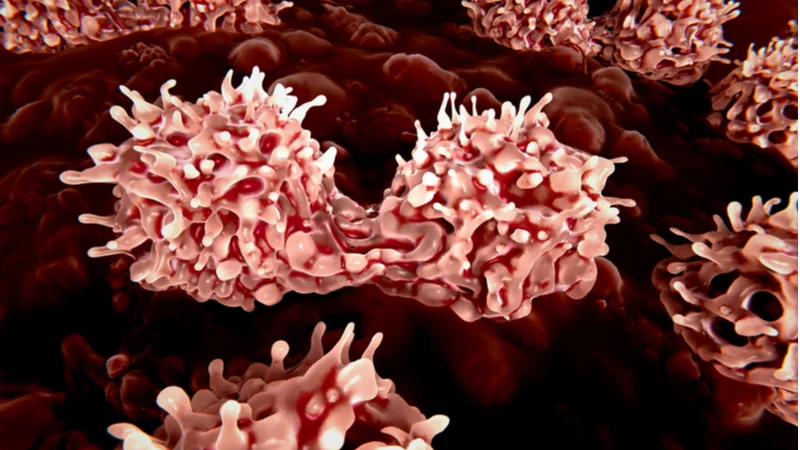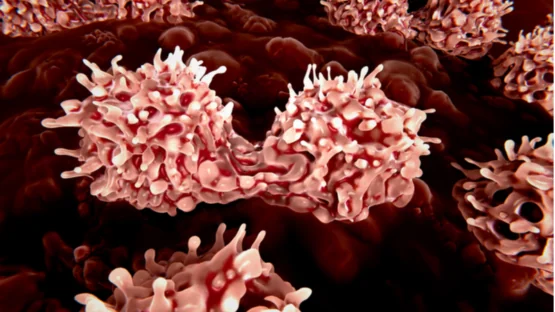Researchers have found that hematopoietic stem cells lose function as they grow larger and that rapamycin can alleviate this effect [1].
When cells become obese
When it comes to cells, size matters, with stem cells being on the smaller side [2]. Scientists have suspected for quite some time that this wasn’t a coincidence, but the relationship between stem cell size and function has not been really looked into until now.
Still, there are some things we know. A couple of previous studies showed that growing stem cells to a large size decreases their proliferation potential [3]. It is also known that senescent cells are bigger than healthy cells [4].
An interesting explanation of this relationship was proposed. Cell growth and division are not independent of each other. Before a cell divides, it increases in size so that the resulting two cells will not end up being too small. However, when a cell suffers damage that makes division dangerous, it temporarily exits the division cycle while repairs are being conducted. During this time off, macromolecules continue to be synthesized, and the cell keeps growing without being able to divide. This growth damages cellular function and might be one of the drivers of cellular senescence.
Don’t supersize me
Building on those previous findings, the authors of this new study explored how the size of human hematopoietic stem cells (HSCs) affects their function. HSCs are remarkably small, but they also proliferate like crazy, constantly rebuilding our blood system.
First, the researchers asked whether the types of damage known to reduce HSC function and induce senescence, such as DNA damage, also cause HSCs to grow bigger. DNA damage was induced in vitro by irradiation, and the affected HSCs indeed ended up being larger on average than the controls.
Does this increase in size contribute to irradiation-induced dysfunction in HSCs or simply accompany it? The researchers reran their experiment, but this time, the HSCs were also treated with rapamycin. The logic was as follows: if during cell cycle arrest, metabolism is slowed by affecting mTOR (mechanistic target of rapamycin), the abnormal cell growth might be prevented. Rapamycin, which is incidentally one of the most promising anti-aging molecules, inhibits mTOR activity and slows cellular metabolism.
During the experiment, HSCs treated with rapamycin exhibited the same amount of radiation-induced DNA damage but did not grow in size. Rapamycin also significantly rescued HSC fitness, including their proliferation potential.
The researchers also had to confirm the hypothesis that abnormal growth is caused by cell cycle arrest. They treated mice with the drug Palbociclib, which causes cells to stop dividing. After the treatment, the mean volume of HSCs in the study group was 263 fl (femtoliters), 15.5% more than in the control group, thus confirming the relationship.
In the next experiment, the researchers upregulated mTOR activity instead of downregulating it with rapamycin. This increased cellular metabolism and enabled the scientists to create large HSCs without abnormal amounts of DNA damage. Such HSCs were less fit than the controls, showing that loss of function was caused more by growth in size than by DNA damage.
Too much volume, too little ATP
Organismal aging does not spare HSCs. As the body ages, these cells grow both larger and less capable of proliferation. The researchers wanted to see whether rapamycin can alleviate this effect in vivo. When young mice were treated with rapamycin starting at week 8 of life, HCS enlargement was prevented, and these smaller HSCs demonstrated better proliferation potential than HSCs from untreated mice of the same age.
The question remains, how does this increase in size cause loss of function in HSCs? At this point, the researchers were unable to pinpoint the exact cause. They hypothesize that, as HSCs grow exceedingly large, their number of mitochondria and quantity of metabolites such as ATP decreases in relation to volume, leading to abnormal metabolism.
We show here that cell size affects the function of HSCs in vivo. Conditions known to induce stem cell dysfunction—DNA damage, cell cycle arrest, increased frequency of cell division, and aging—cause HSCs to increase in size. Preventing HSC enlargement by interfering with macromolecule biosynthesis or reducing their large size by accelerating progression through G1 prevents the loss of stem cell potential.
Conclusion
While not being specifically aging-related, this study provides exciting and important insights for the longevity field. It shows that the growth in cell size that accompanies aging reduces the fitness of hematopoietic stem cells and might be one of the mechanisms of cellular senescence. The study also discovered a potential mechanism of action of rapamycin, one of the most popular molecules in aging research. We hope that further research will answer the question of how exactly the increase in cell size leads to loss of function.
Literature
[1] Lengefeld, J., Cheng, C. W., Maretich, P., McReynolds, M. R., Blair, M., Hagen, H., … & Amon, A. (2020). Cell size is a determinant of stem cell potential during aging. bioRxiv.
[2] Li, Q., Rycaj, K., Chen, X., & Tang, D. G. (2015, December). Cancer stem cells and cell size: a causal link?. In Seminars in cancer biology (Vol. 35, pp. 191-199). Academic Press.
[3] Neurohr, G. E., Terry, R. L., Lengefeld, J., Bonney, M., Brittingham, G. P., Moretto, F., … & Amon, A. (2019). Excessive cell growth causes cytoplasm dilution and contributes to senescence. Cell, 176(5), 1083-1097.
[4] Mitsui, Y., & Schneider, E. L. (1976). Relationship between cell replication and volume in senescent human diploid fibroblasts. Mechanisms of ageing and development, 5, 45-56.




